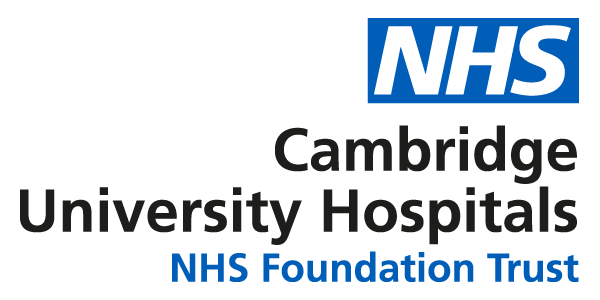We provide a comprehensive service in allergy for adults and children. Most of our patients are seen as outpatients (in Clinic 2A), but we also have inpatient facilities.
Outpatients
For allergy, skin tests and diagnostic challenge tests are performed.
We have a specialist nut-allergy clinic and an insect-sting allergy clinic, and we also provide management plans for anaphylaxis (including training in Epi-pen™ and school visits) and severe reactions, e.g. glottal oedema.
We offer desensitisation for bee-venom and wasp-venom allergy, pollen hay fever and house dust mite allergy.
Non-urgent advice: Before your appointment
- Please do not take anti-histamine medications for three days before appointment as this will interfere with the allergy testing.
- If you suspect you are allergic to fruits and vegetables, please bring one of each with you as these are needed for allergy testing.
- Also bring unusual fish or shellfish.
Telephone appointment / consultation
In preparation for a telephone appointment, please have your symptom diary, Adrenaline Auto Injector (if you were prescribed one), peak flow diary (if known asthmatic), and a list of your regular medications, including any inhalers, to hand.
Our allergy clinic is a specialist centre that takes referrals from around the country, and also acts as a specialist hub for the East of England.
The clinic (located in clinic 2A) provides a wide range of services covering all aspects of clinical allergy. These typically include an assessment starting with a comprehensive allergy-focused history, followed in many cases by skin testing and sometimes challenge testing. Following this, a comprehensive plan is agreed and communicated with the patient and their family and all health professionals involved in that person’s care.
Various treatments are available, including management plans for allergen avoidance, adrenaline auto-injector training, immunotherapy to pollen and insect venom and biologic treatment of chronic spontaneous urticaria.
Referral information
Following a referral from your GP, you may be offered a face to face appointment for allergy testing ahead of discharge. This may involve diagnostics like skin prick tests, intradermal tests, blood sampling and challenge testing (taking a medicine by mouth). To conclude, you may be offered another face to face or telephone consultation follow up to discuss test results, the proposed management plan, and any further queries.
You will receive a letter confirming a face to face appointment if further testing or challenge is required, and you may need to not take any anti-histamines for three days if able. If you are unable to attend your appointment, please contact the clinic as soon as possible by email (add-tr.allergy.secretaries@nhs.net) or telephone (01223 217777 option 3 for the secretaries).
Please inform us if you or your child requires extra time or specific equipment for face to face appointments. For example, it would be helpful to know if your child is needle phobic.
Food allergy
Between 6-8% of children and up to 4% of adults suffer from a food allergy. People with food allergies develop antibodies against certain proteins in foods known as allergens. When they eat that food their body reacts, usually immediately or less than an hour after eating, although some babies can have very delayed reactions to milk. Reactions usually involve itching or swelling of the mouth/throat and itchy rashes and/or hives like insect bites. Wheezing, hay fever, eczema and flushing can also occur.
Symptoms can be severe and include life-threatening anaphylaxis. Food allergy in adults is often linked to hay fever in the spring and/or summertime, with reactions. This condition is known as oral allergy syndrome (OAS) and involves immediate symptoms, typically itching of the lips, mouth and ears, triggered by a cross-reaction between the pollen antibodies and plant food proteins
(Source: Bscai.org - Food allergy and food intolerance (opens in a new tab))
Urticaria and angioedema
The allergic process can affect the skin producing two main types of rashes: urticaria (hives, nettle rash, welts) or eczema (see atopic dermatitis).
Urticaria is a red itchy bumpy rash that is often short-lived and can appear in various shapes and sizes anywhere on the body. It is very common affecting one in five of the population at some time in their lives. In some people urticaria is accompanied by large dramatic swellings commonly affecting lips, eyelids, tongue and hand called angioedema.
In many individuals, no cause can be found for the urticaria and angioedema but it can occur as part of an allergic reaction such as to foods, drugs, insect stings. Sometimes external/physical stimuli can provoke the condition such as sunshine, water, pressure on the skin, exercise and stress.
Angioedema without urticaria can occur and may be related to blood pressure-lowering drugs called ACE inhibitors and examples of this group are lisinopril, enalapril and ramipril.
Interestingly these reactions often start after several months/years of regular treatment and hence this important association must not be overlooked. Release of histamine in the skin produces urticaria and therefore antihistamines are the mainstay of treatment.
The non-sedating ones are most suitable such as cetirizine, fexofenadine and loratadine. In some individuals, the rash persists over weeks and months and this chronic form may require specialist intervention to allow the condition to be appropriately treated.
(Source: Bscai.org - Skin allergy (opens in a new tab))
Anaphylaxis
Anaphylaxis is an acute severe allergic reaction. The clinical features of anaphylaxis can vary, but typically comprise hypotension and/or respiratory difficulty (laryngeal oedema or asthma) often in association with cutaneous features such as urticaria, erythema or angiooedema. Other features may also be present.
(Source: Bsaci.org - Anaphylaxis (opens in a new tab))
Hay fever and allergic rhinitis
Rhinitis means inflammation of the lining of the nose. Rhinitis is defined clinically as symptoms of runny nose itching, sneezing and nasal blockage (congestion). Common causes of rhinitis are allergies which may be seasonal (hay fever) or occur all-year-round (examples include allergy to house dust mite, cats, dogs and moulds). Infections which may be acute or chronic represent another common cause. Rhinitis (whether due to allergic or other causes) is a risk factor for the development of asthma. Rhinitis is also implicated in otitis media with effusion and in sinusitis which should rightly be termed rhinosinusitis since sinus inflammation almost always involves the nasal passages as well.
Allergic rhinitis is very common, affecting one in four in the UK. As with other allergic disorders (asthma, atopic dermatitis), rhinitis is much more common in westernized societies; the prevalence of rhinitis continues to rise in many countries.
(Source: Bscai.org - Hay Fever and Allergic Rhinitis (opens in a new tab))
Asthma
Asthma is a condition that causes swelling and inflammation inside the airways of the lungs. This inflammation and swelling is there to a greater or lesser degree all the time in people with asthma. The more inflammation there is the harder it becomes to breathe. People with asthma also have over-sensitive airways, so their airways react to triggers that do not affect other people. When sufferers come into contact with something that irritates their airways (a trigger), it can cause their airways to narrow. This happens in three ways:
- The muscles that surround the airway tighten
- The lining of the airway becomes inflamed and starts to swell.
- Sticky mucus is produced which can narrow the airways further still
(Source: Bscai.org - Asthma (opens in a new tab))
Drug allergy
Prescription drugs have been through a rigorous process of testing to ensure safety, despite this, a minority of individuals will develop side-effects. Side- effects are termed 'adverse drug reactions' by doctors and although the majority of adverse drug reactions are relatively minor and may even allow continuation with the drug, in some cases more severe symptoms can occur.
The majority of adverse drug reactions are predictable and affect susceptible patients, for example gastric irritation with aspirin, or occur due to an interaction between two drugs, for example bleeding with warfarin when taken with some antibiotics. Adverse drug reactions account for approximately 6.5% of hospital admissions and in up to 15% of patients prolong the hospital stay.
A smaller proportion of adverse drug reactions are due to drug allergy and in these cases, the drug causes an unexpected reaction, which is not predictable in a particular individual. Typical symptoms include swelling of any part of the body, including the face, throat and tongue (angioedema), which may lead to difficulty in breathing, widespread itchy rash (urticaria), tight chest with wheeze and worsening of asthma or, in very severe cases, a drop in blood pressure leading to collapse or loss of consciousness. It is these cases of drug allergy that are investigated and managed in an NHS allergy department. Anyone who suffers such an allergic reaction should record details of the offending drug by keeping the original packaging, note down how much of the drug was taken, record as much detail about the reaction as possible, if appropriate, by taking photographs.
(Source: Bscai.org - Drug allergy (opens in a new tab))
Biologic and immunotherapy treatments
Immunotherapy retrains the immune system to tolerate tree and grass pollen, insect venom or food. It can be given by regular injections, by mouth, or by a tablet under the tongue, depending on the allergy. We use injectable immunotherapies for severe reactions to bee or wasp stings, and tree and grass pollen.
Biologics are injectable drugs that treat specific immune conditions, we use omalizumab to treat patient with severe Chronic Spontaneous Urticaria. For many of our patients, these immunotherapies improve quality of life and reduce allergic symptoms. See link documents below for leaflets and further information about these therapies.
Links for patients
Inpatients
We care for inpatients:
- with severe or poorly controlled disease, eg asthma, rhinitis or eczema
- with multi-system allergic disease
- or where an allergic aetiology is suspected
An allergy referral often identifies common triggers and allows a unified approach to management.


